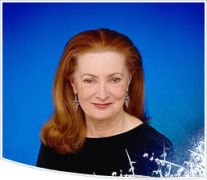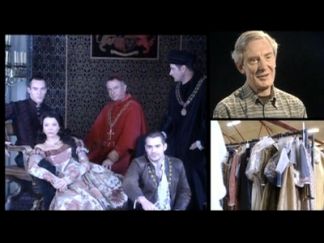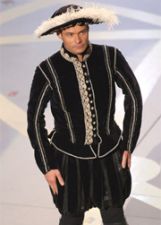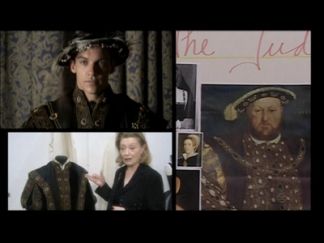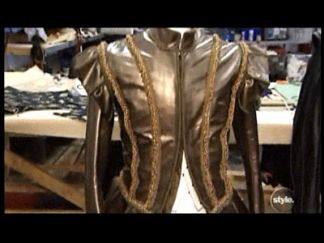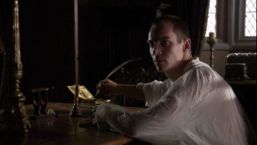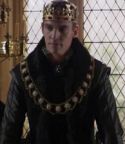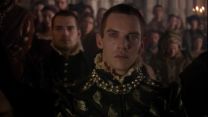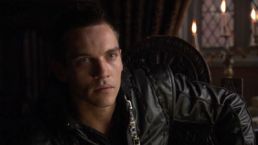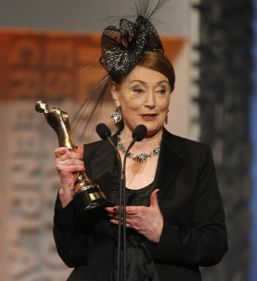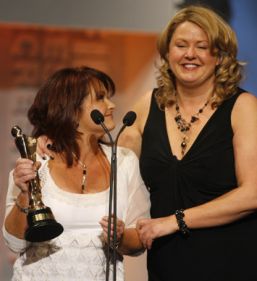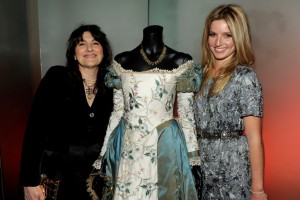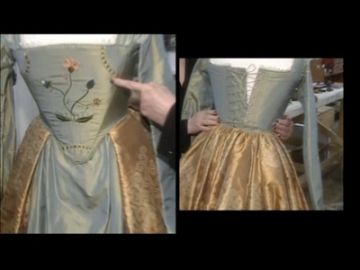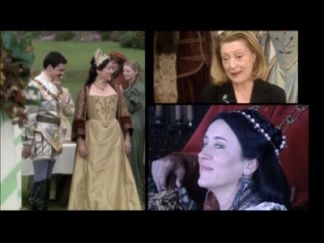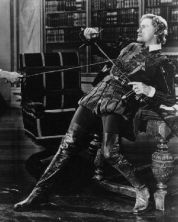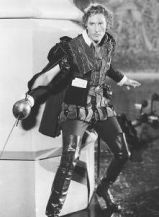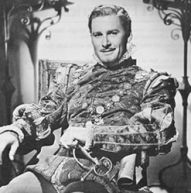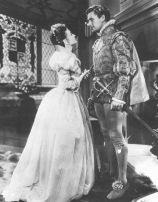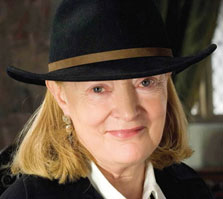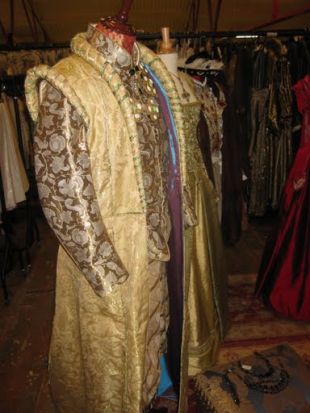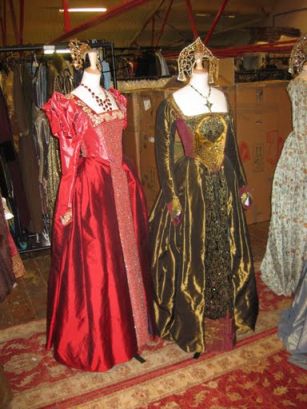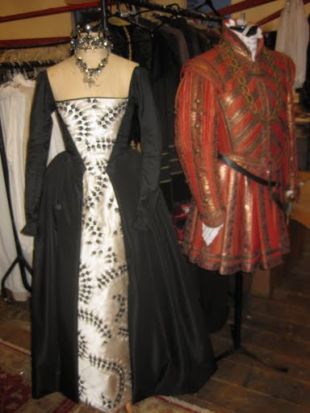COSTUMES of the Tudors
Jump to navigation
Jump to search
◄ Back home: <a href="/" target="_self">The Tudors Fan Wiki</a>
| The Tudors Costumes as translated for the series
Tudor Tidbits on King Henry VIII's Costumes
"They didn't want a rigid BBC costume drama," Ms. Bergin said, "not least because our Henry is a young man. I showed that in private moments - we could have him in a collarless shirt. I have used black leather and wool, with touches of gold and white to evoke the rat pack of young aristocrats trying to gain a place in court". |
The 5th Irish Film & Television awards - 2008 Winners
| Joan Bergin accepting her award for Best Costume Design | Dee Corcoran & Jennifer Hegarty for Best hair and Makeup |
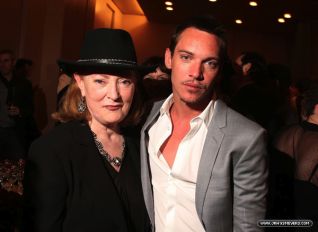 Joan Bergin and Jonathan Rhys Meyers at the Season 3 launch party | 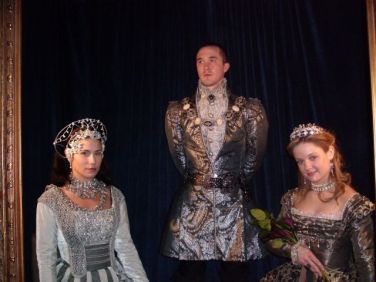 Costumes from Season 3 being shown on models at the launch party |
| Annabelle Wallis next to her trademark Teal dress | 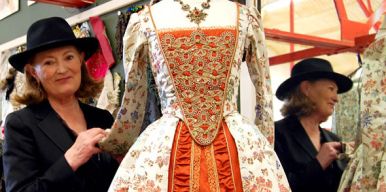 Joan Bergin with Katherine Howard's costume |
TUDOR STYLE - deconstructed
|
|
The Tudors costumes inspirations: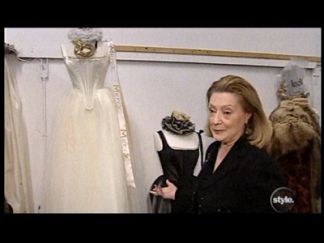 Joan Bergin explains the inspiration for the masque scene were the ballet costumes of Degas & Balenciaga's corsets which were in turn inspired by the Elizabethan era. 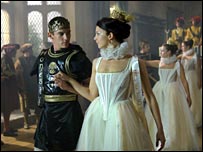 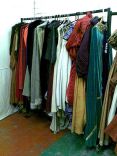 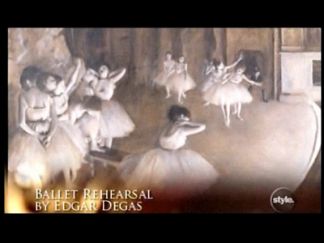 | Some of the clothing came from costumes Bergin found left over from a 1930's swashbuckler film starring Errol Flynn. "I thought the old costumes would look shabby and worn (in high definition)," Bergin says. " But high definition loves the old dyes and (non-synthetic) fibers". LINK:
|
| Interview with Joan Bergin in the Post.IE May 20, 2007 This year alone, Bergin has been working on the biographical film of Brendan Behan, The Bells of Hell, and revamping the Riverdance costumes for the show’s return to Ireland this month. She has also worked on 1,400 costumes for the US television series The Tudors, and the ‘‘one-and-a-half “ costumes required for Sam Shepard’s Kicking A Dead Horse at the Abbey.... ‘‘I did a ton of research and then deconstructed what I saw. I’m always looking for the road back: what was original about the period I am to represent, and what’s the road back to where we are now?” It was an approach she also used on the costumes for The Prestige last year. ‘‘In the Prestige, I wanted to find what about Victoriana would make us really identify with the people, and this was true with Riverdance and the Celts. What would make you go ‘wow, that’s what we were’? Well, on good days, that’s what we tried to do.” A good costume designer, Bergin says, is an anthropologist, constantly storing up images from the world around, even if it means the occasional bout of visual indigestion. Her method of expressing the kernel of a character through their clothes is one she says she shared with one of her team, Carol Graham, who died tragically a few weeks ago, while still in her 30s. ‘‘I loved that she gathered visual information in the same way I do; working with Carol was affirmation that I wasn’t mad.” |
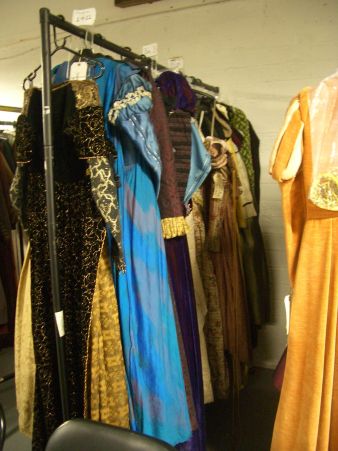 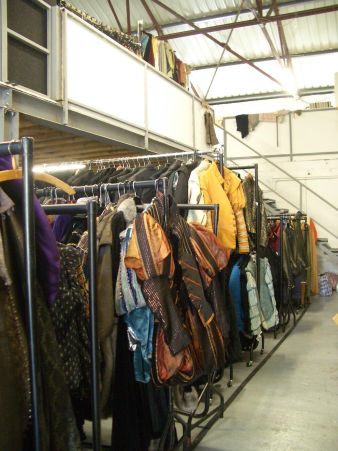 |
| ROYAL DESIGN 'TUDORS' DUDS FIT FOR A KINGBy ROBERT RORKE - New York PostThe real stars of "The Tudors" are the costumes. It was no surprise that the show's costume designer. Joan Bergin (right), walked off with the Emmy Award last year. Her brocades, silks and plush furs give the stately Showtime series a rich, romantic look that adds an elegant veneer to the sometimes diabolical plot. If a king is going to cast the Catholic church out of England and condemn his wife to death, shouldn't he look fabulous while doing it? Bergin clearly thinks so. She dresses star Jonathan Rhys Meyers in brocade jerkins, fancy black velvet hats, sleeveless leather vests and extravagant fur capes that would send PETA members into fits. The designer says Rhys Meyers loves fashion. "One of the really great aspects about 'The Tudors' is that Jonathan really understands and appreciates clothes. I'm so lucky," she says. "Henry VIII had such charisma that when he entered a room people would stop talking." 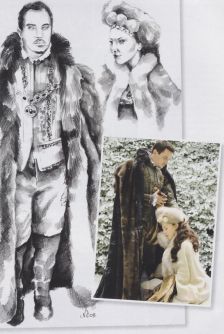 Working with a staff of 17 to turn out costumes for 110 cast members in 10 weeks, the Dublin-born Bergin relied upon journals written by members of King Henry's court and her own knowledge of English history for background. "It's an old Irish proverb that you serve your enemy well, so every Irish child would know a lot of English history," she says. Working with a staff of 17 to turn out costumes for 110 cast members in 10 weeks, the Dublin-born Bergin relied upon journals written by members of King Henry's court and her own knowledge of English history for background. "It's an old Irish proverb that you serve your enemy well, so every Irish child would know a lot of English history," she says. Her vast network of contacts in the costume community came in especially handy. These included John and Vanessa Hopkins, a couple that collects vintage fabrics. They contributed a 150-year-old panel of molten silver silk that forms the bodice of a staggering silver-and-blue shot silk dress worn by Anne Boleyn (Natalie Dormer). For jewels, Bergin struck gold with a company called Sorelle, run by two sisters, which is what the name means in Italian. "They sent me six pieces. Then they sent me another 200 pieces," Bergin says. Another Italian vendor, Autore, sent an "amazing pearl necklace and earrings" worth about $40,000. "I was a bit daunted because I saw it was Art Deco. So I designed the dress to go with the pearls." Anne Boleyn will have her head chopped off wearing those pearls, in episode 10. Bergin was working on the 2006 magician drama "The Prestige" when she was offered the "Tudors" job. "The complexity and the scale of [the show] and how to deliver it so that it's not another bloody costume drama - that's why I took the job." A veteran of the Irish film industry, Bergin has never studied costume design. The former architecture student, who lives in Dublin with freelance journalist Kevin O'Connor, showed a flair for wardrobe early in her career when she was an actor. "I was working in a small theater and the costumes were so dreadful that I said, 'Oh, look, for God's sake,'" before taking over. She has designed the wardrobes on three Daniel Day-Lewis films - the Oscar-winning "My Left Foot," "In The Name of The Father," and "The Boxer" - and also dressed the casts of "Riverdance" and the 2000 TNT miniseries "David Copperfield." While many viewers might think more actresses than actors would be interested in costume design, she believes "men are intrinsically more vain than women. In the beginning [of 'The Tudors' production], the men were so coy and shy about these clothes. Six weeks in, they were strutting around the set." As Bergin prepares for a possible third season, she is surprised that she's made it this far. "If you had told me two years ago that 'The Tudors' would be such a drawstring at the heart..." she says. "It's [my] vanity." |
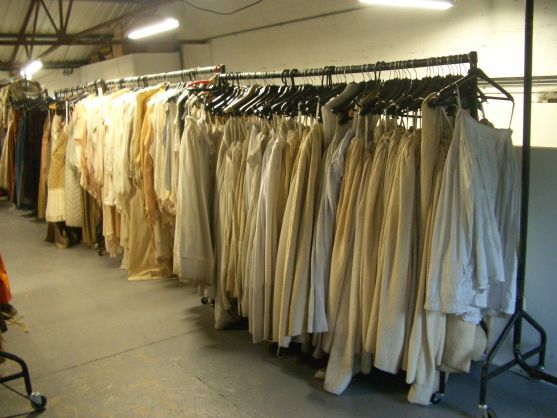 |
Behind the scenes : Tudors costume designer dishes on the look of Season 2by jill on April 7th, 2008 - ShowtimeFan.comOne of the best parts of the Tudors, hands down, is the costumes. Thanks to Emmy-winning costumer Joan Bergin, the show transports us to a lush foreign world where the lives of the rich and powerful are anything but pedestrian. As part of the press materials for Season 2, Bergin sat for a Q&A session. Among the highlights, we learn that:
Are you a costume junkie? Read the full Q&A: How did you begin to design the costumes for Season Two? This time round, I’ve done a lot of research into Spanish and Italian fashion from the period. I’ve amalgamated Tudor style with more European influences, so overall the look is softer. As a costume designer, I can really guide and channel the story in a way that simply isn’t possible in feature films. That’s an enormous amount of responsibility and freedom which both Tom Conroy (production designer) and I have really responded to. How has the writing inspired the costumes? Well, Michael Hirst has been absolutely central to the work. We’d talk constantly about how a character is feeling or thinking at a particular moment and then try to reflect that in the costumes. It’s a great privilege for a costume designer to be able to do that. Michael was especially helpful to us in thinking about some of the lesser characters. He knows a great deal about them that might not have made it into the script. For instance, we learned that Thomas Cromwell was a mercenary soldier in Germany so I’ve tried to include little military touches that hint at that. 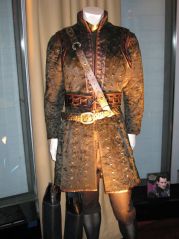 Tell us about the scale of your task in making the costumes for Season Two. This season, we’ve created in the region of 1,500 costume pieces. We really raised the bar in terms of our ambitions and standards. In a feature film, you might have three ‘set-piece’ gowns for Anne Boleyn. Here we have at least one or two every week! Anne had about 17 major costumes, including jewels, head pieces, shoes - all made from scratch. Shooting The Tudors is relentless: it’s one historical scene after another. There’s no let-up! We’re constantly creating - from a full state ball to a battle to a hanging to a prison - and each time we’re creating a full tableau. What we’ve produced this year is quite beautiful: a lot of Jonathan Rhys Meyers’ clothes for Henry are just museum pieces in their detail and execution. How does designing for The Tudors differ from other projects you’ve worked on? The big danger as a designer is falling into a very stylized and purely visual set of ideas about the costumes. It’s crucial to remember that these were real people, not portraits or models. I think that the success of The Tudors has been that audiences are looking at these historical characters in costumes and settings that they can understand rather than just odd and remote contexts. The costumes go on the journey with the characters; they’re not just some random adornment. I’m quite fascinated by social history as it relates to costume and I try to incorporate that - the kind of cloth different classes wear, or who would wear fur, and so on. How did you go about designing the look of Henry’s costumes this season? We’ve been thinking about Henry as someone whose feeling for fashion influenced a whole generation - like Bowie or Madonna. He was 6′3″ when most men were almost a foot shorter. Henry had enormous charisma and was physically striking. I’m trying to communicate all that. I’ve also imagined that in the back of his mind, Henry wants to go to war. There are little military touches which harden his overall look: small elements of worked leather, heavy moleskin, garments which are reminiscent of chain mail. No matter how well the characters around him look, when the King walks in, I want everyone to go ‘Wow!’ 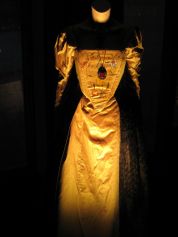 What guided your designs for Anne Boleyn? One of the things we want to reflect in the costumes is the changing fortunes of the characters. Anne’s costumes evolve more than anyone else in the show. Her clothes get more elaborate and elegant, to the point that she matches her King by the end of the season. She evolves from being despised as a young opportunist to someone who, by the time of her execution, people knelt down and took their hats off to. We went to a great deal of trouble to achieve that transformation. The material we used in creating her Coronation dress is 150 years old - hand-spun silver which we found in a shop in London. It’s absolutely exquisite. Costume plays a crucial role in visualizing the development of this character from young and gauche Daddy’s girl to this quite magnificent Queen. As an actress, Natalie has matched everything we put around her; it’s a terrific performance. Did you enjoy costuming Peter O’Toole? Of course! It was a real thrill to be dressing an acting legend. The Papal costumes are all specially made. The tailors were delighted to be making Peter’s garments - and he is wonderful to dress; tall and slim. I copied his outfits directly from papal paintings from the period. I really so enjoyed working with him. There was one moment when I turned to him and I saw Lawrence of Arabia! Where did you get the fabulous jewelry? With the success of Season One, we’ve had a lot of interest from jewelry suppliers. Anne Boleyn’s pearls for her coronation cost $65,000 and were loaned to us. A costume jewelry company called Sorelli, whose style is inspired by Elizabethan and antique fashion, has been wonderfully generous in allowing me to adapt some of their pieces. We’ve also used an Irish company, Tipperary Crystal, for Jane Seymour. Their pieces have worked really well with our design goals. Does shooting on DV affect the way you make the costumes? It’s very unforgiving: you can’t fudge anything. There’s an incredible level of detail in all the clothes: the stitching, the lining, the buttons, the button holes and the fabric all belong to wearable clothes made with extraordinary precision. Some of these pieces have already been requested by museums. |
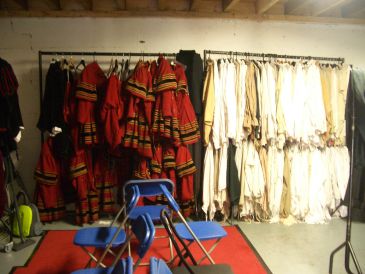 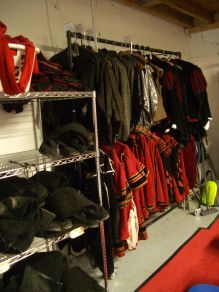 |
| Henry VIII: dressed to kill Joan Bergin, costume designer for 'The Tudors', looked to Holbein, Degas and the Rolling Stones to create more than 2,000 lavish outfits for the hit series. BY <a class="external" href="http://fashion.telegraph.co.uk/columns/hilary-alexander/" rel="nofollow" target="_blank">Hilary Alexander</a> | 31 March 2011 <a class="external" href="http://fashion.telegraph.co.uk/news-features/TMG8416732/Henry-VIII-dressed-to-kill.html" rel="nofollow" target="_blank" title="fashiontelegraph.co.uk">fashiontelegraph.co.uk</a>If you were to have read some of the reviews of The Tudors - the lusty, award-winning historical drama about bed-hopping, bodice-ripping Henry VIII and his wives - you could be forgiven for thinking clothes were of scant concern and that the wardrobe of the day focused pretty much on cleavage and codpieces and what one wore (or didn't wear) in the royal four-poster.But, in fact, the show's creators decided that there shouldn't be a single codpiece on screen. It was felt their presence might prove to be an overwhelming distraction and render viewers unable to follow the storyline. Codpieces aside, to watch the series, created by Michael Hirst, is to be transported back to a magnificent world where the costumes make for a compelling parade - rather like a catwalk show at Tudor haute couture fashion week. This is particularly true of the fourth and final season, which concludes this Saturday on BBC Two, with Jonathan Rhys Meyers as England's most notorious king, and Joely Richardson as Catherine Parr, his sixth and last wife. The clothes look magnificent: opulent, extravagant, and utterly regal. Which is exactly what the costume designer, the three-times Emmy award-winning Joan Bergin, sought to achieve. "I wanted to be historically accurate, but with a twist," says Bergin, who has a long list of film credits to her name, including My Left Foot and Dancing at Lughnasa. "I also wanted people to think, how foxy, how sexy - because it was." And, yes, this sex factor did not extend to including the 16th-century male "must-have", the elaborate casing attached to the front of gentlemen's trousers. "If codpieces were included, the bosses thought that the [viewers'] eyes would never move to the actors' faces. In Ireland, there is a saying about being kicked in 'the family jewels', which came from Tudor times. As codpieces became bigger and bigger, men would store their jewels in them when they travelled. But even that didn't sell it to [the bosses]!" Bergin took her research for the show seriously, using historical accounts of the period for her finely woven portrayal of the Tudor court. She made much use of the letters of Eustace Chapuys, the French Savoian diplomat who served as the Imperial Ambassador to England for nearly 20 years. He was a champion of Henry's first wife, Catherine of Aragon, and wrote to her parents, Ferdinand and Isabella, King and Queen of Spain every day, informing them of all the goings-on in the royal household. "My clue to the low-necked décolletage that so many of the girls favoured was in one letter where he is describing a lady at court, flushed with wine and leaning forward so he could see her nipples. Fascinating." Bergin also drew on works by Hans Holbein, the great 16th- century portraitist and the King's official painter - but also drew inspiration from more contemporary sources. The paintings of the French impressionist Degas aided her designs. So too did John Galliano's earliest haute couture collections for Dior and menswear collections under his own label. Balenciaga, the Spanish master-couturier, whose dramatic black, bejewelled gowns referenced the Spanish Infanta and Elizabeth I, and Alexander McQueen also influenced her creations. Perhaps the strongest contemporary influence came from modern-day rock stars, as Bergin admits. This was particularly valuable when it came to dressing her favourite, Jonathan Rhys Meyers. "One of the things about Jonathan is that he has a presence, like Bono or one of the Rolling Stones, walking into a room. This was the effect I wanted to recapture with Henry, as a rock star of his time, with costumes that would convey that charisma. Remember that Henry was 6ft 3in at a time when most men were 5ft 7in or 5ft 8in, and there was not an ounce of fat on him in his early days." Bergin shows me a museum-quality coat in black velvet and leather - hand-embroidered, studded and embellished with intricate silver metal tassels - that was made-to-measure for Rhys Meyers. In Tudor times, this sort of coat would have been worn over what were called "slops" - knee-length trousers or breeches. It is exquisitely made in every respect, both inside and out. The hammered detail on the leather, Bergin reveals, was achieved by hand-beating it on the iron staircase outside her design studios in Ireland. Bergin had a total budget of about £2.5 million for four series and estimates she created more than 2,000 costumes. "Yes, it was a healthy budget, but not 'wow'. We did re-use and re-dye a lot of stuff and we rented from all over the world. We coined the term 'Tudorise' to describe how we could tweak something to fit the scene, by adding braiding, or beads." She scoured antique fairs and auctions for rare finds. She bought two trunks filled with exotic fabrics from all over the world, and found a 150-year-old length of hand-spun silver that had been woven in London. She used it for Anne Boleyn's coronation dress and accessorised it with magnificent jewellery that was so expensive a bodyguard came on set to guard it. As the series progressed, Bergin found herself becoming ever more fascinated by the details of the period. "I would read up on all the main characters. I'm a great believer in research, especially the social history. So as Henry ransacked more and more churches and monasteries, I imagined him spending more on his own wardrobe. So his clothes became more and more opulent. And Henry might have called his fourth wife,Anne of Cleves, 'the Flanders mare' because of her looks, but she was always beautifully dressed. The Westphalian silver she wore became so fashionable, everyone had to have it." Viewers of the final series will have seen Henry's fabulous coat of arms, worn when he rides into battle at Boulogne, but they may not know its provenance: Bergin tells me that it is the original tabard worn by Laurence Olivier when he starred in the 1944 film Henry V. Appropriately, some of the costumes for Henry and his six wives have been loaned to the museum of the Mary Rose, one of Henry VIII's favourite ships, housed at the Portsmouth Historic Dockyards. It is also hoped that the wedding robes worn by Henry and Catherine Parr will be on show there to celebrate the forthcoming royal nuptials of Prince William and Catherine Middleton. Bergin, meanwhile, has turned her talents to a far less stylish period in history. "Bad teeth and matted hair," were her first thoughts on a new series, Camelot, which is set in Britain just after the Romans have left, and stars Joseph Fiennes, Eva Green, Jamie Campbell Bower, Sinead Cusack and Tamsin Egerton. "It's the sixth century, one of the trickiest I've ever done, but I've tried to fuse people's expectations about King Arthur and Guinevere with historical accuracy. I've gone for a country look." If she achieves anything like the gorgeous historical fashion sweep she has created for the Tudors, no doubt we'll be lusting after Camelot before too long. |
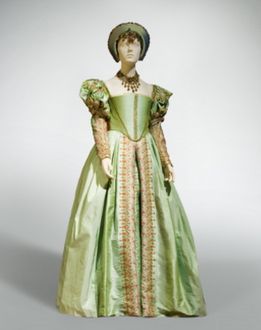 Season 2, Anne Boleyn Gown | 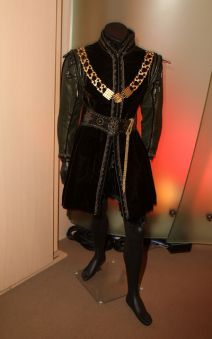 |
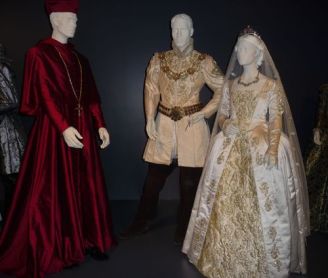 Season 3 | 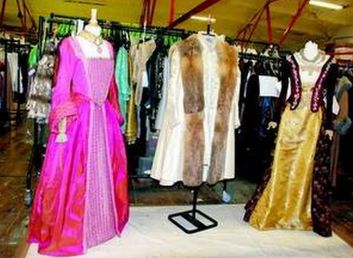 Season 3 |
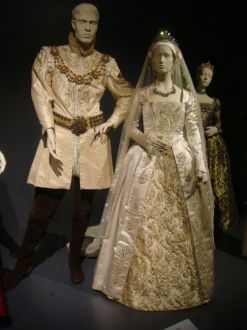 Season 3, Jane & Henry Wedding Attire | |
| | |
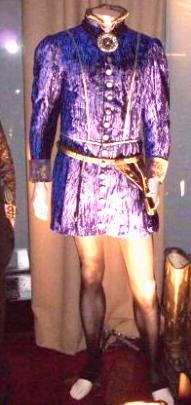 | 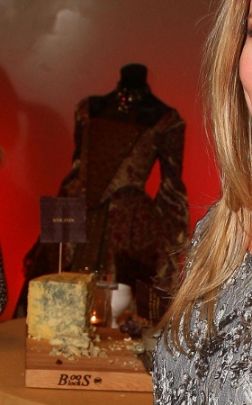 |
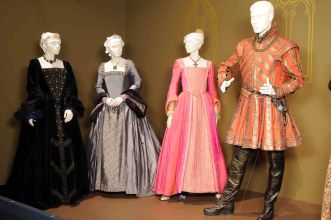 | 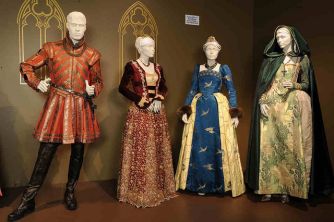 |
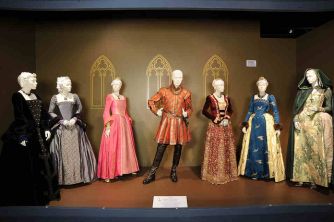 | 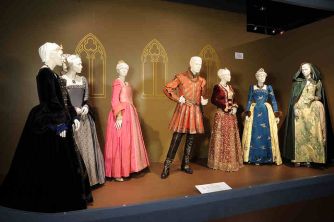 |
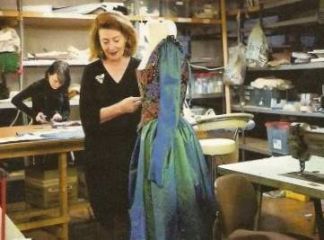 | 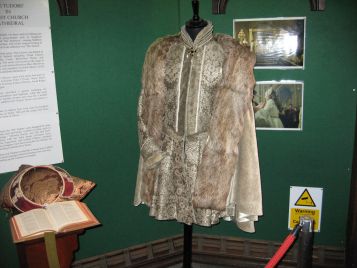 |
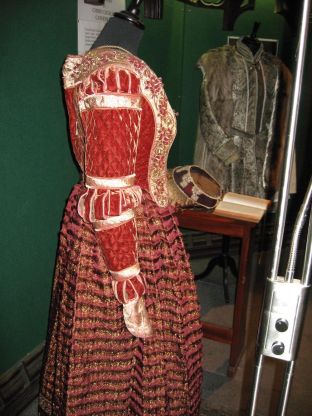 | 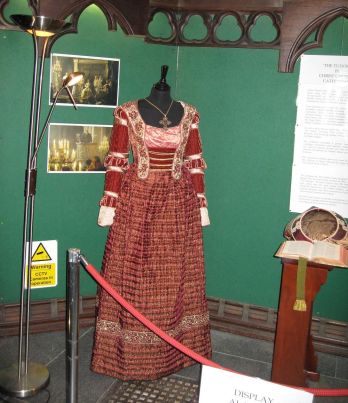 |
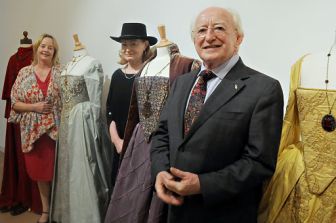 |
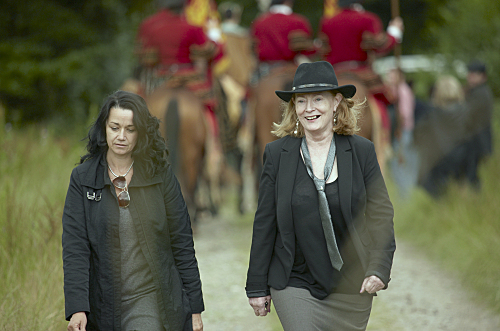 From the Production Notes for Season 4, released in March 2010: From the Production Notes for Season 4, released in March 2010:Joan Bergin is one of the great off-screen stars of The Tudors. Her extraordinary costumes have come to define the show’s tone and visual style and have won her plaudits from audiences, critics and peers. Her work on The Tudors has garnered many awards including three Emmy nominations (‘Outstanding Costumes for a Series’) and two wins (2007, 2008). Looking back over the four seasons of the show what were the principle design challenges? JB: The scale of the task. When we started and I read the script, I thought we couldn’t possibly put this up on screen: it seemed too dense, too complicated. I’m not saying that it has become so easy that we are singing while we work, but it is astonishing to me that as if making the clothes wasn’t enough, we’re now making the crowns, the jewellery, the shoes, and the armour! So it has become like a medieval workshop and everybody has been challenged and stretched by it. So at the end of four years, it’s almost an agony to leave it. A part of you realises that the rest of your life cannot be about the problems of Henry VIII, but at the same time people have acquired such skill that it’s quite sad that it has come to an end. What has happened with The Tudors which doesn’t normally happen with episodic TV is that it has entered a realm that is so handsome and detailed and so big, it’s quite extraordinary. Showtime have stayed with it and believed in it and allowed us to continue on improving and bettering it. Has it been quite a dynamic process working with the actors? JB: Oh yes, very much so. I think the person who gave me the greatest enjoyment, apart from the King, was Anne Boleyn (Natalie Dormer). You needed to understand what she was about to become was so amazing that you didn’t come out with all guns blazing, that you had to leave her fairly simple, fairly coy and attractive but not ‘wow’. Not the Anne Boleyn she became, so you had somewhere to go. What did you especially enjoy about designing the costumes for Henry VIII? JB: Well his was an extraordinary journey – I would say unrivalled in film or TV - in costume terms because it begins with a concept of him as a kind of rock star of his time. You know, this young man, everybody was affected by him and that it was the dawn of a new Camelot. And we took him right through to the state he is at the end of season 4 which is a sour, decaying, disillusioned and disappointed king. And the actor (Jonathon Rhys Meyers) is unusual in that you have someone who both looks so good in these costumes, but also has such an understanding of clothes and that helps enormously. This year has probably been the most interesting in costume terms because we had to find some way of showing that Henry was older although the actor is still 32 years of age and slim. So we built up this system of padding from 1 to 5 and then we added a lot of furs and lots of gold so that the opulence masked the disillusionment. We grew him into a look that demonstrated that he really wanted to show the power of his kingdom until he became seriously ill which is historically true. The set designers have reduced his world to a wonderful gothic black and gold and purple which is opulent, but you have to strain to see him in it and I went with that very much for the costuming. So it was like somebody who put on fine clothes but was no longer interested in them. But the greatest thrill for me was making the costume for the famous Holbein portrait that everyone knows of Henry VIII. I think everyone thought that we would deliver a version of it, but what we delivered was every exact detail, so that when he walked onto the set the gasp was very wonderful! We even made the jewellery to match the portrait. It was just wonderful. In the first part of the season he marries a very young woman, Catherine Howard. How did you approach the costumes? JB: That was just the most fun. There wasn’t anything in the writing so I came up with this very girly thing, Henry would arrive into the room and she and her ladies would be in the middle of a maelstrom of clothes everywhere and would think ‘Oh my god what have I done, here are all these 17 year olds screaming and trying on dresses!’ The actress playing Catherine Howard (Tamzin Merchant) was absolutely wonderful which made it even more fun. It couldn’t have been more different from what went before: the beginning season 4 starts with him being reborn and trying to live up to this young one who wants to dance every night. Catherine’s wardrobe is all girly flowery pinks and blues. Her rooms are absolutely beautiful and filled with embroidered turquoise silks. Where do you find these amazing fabrics? JB: I came across the majority of the fabrics for this season in a most extraordinary place. An American woman named Anne Bullitt was the daughter of an American ambassador to Africa and she married a horse trainer and lived in Ireland for many years. When she died recently she willed a large portion of her clothes to a local Children’s hospital. I went along to look at them at auction and one of the auctioneers, who was a huge fan of The Tudors told me that the woman had also left two huge trunks of fabrics, and so I got these exquisite fabrics! That has been one of the huge things this year. They came from Paris, Japan, silk damask and silks made in Thailand. I also bought the most amazing jewellery. So in a way a lot of this year’s costume work has been hers. This treasure trove gave great inspiration for this season. She would have done most of her shopping in Paris and New York in the 1950s. It was from the shops that would have supplied couture houses like Ungaro, Givenchy and Chloe; shops which no longer exist today. What were the biggest challenges for this season? JB: Well this was really a heavy year, because there’s nothing as heavy on costumes as battle. That was huge and we made most of the armour and the military clothes in the workshop too. There’s a surprising amount of research material available and we did everything quite authentically. One of the problems with armour that I was trying to avoid was to have the soldiers look too generic on horseback, so I really worked very hard with Liam Rodden who is our head tailor and the influence I took was the Japanese warlords to make people gasp when they saw the King. His costume is extraordinary – like something from a Kurosawa film. Then for the big battle scene we discovered someone in the UK who had Laurence Olivier’s original Henry V tabard (coat of arms) and that’s what our Henry rides into battle with. So there’s this connection with that great actor and film. How did you go about dressing Henry’s sixth bride?! JB: Well, the clothes were so magnificent and gilded I was kind of begging that they prolong the wedding scene because you can’t make quick wedding clothes, you put all that work into them and she had a magnificent gold coat and a train, and that was it, it was not seen again. Even the front of the dress had a hundred year old Japanese Obie belt cut into panels, but they did get a great shot of the back and they zoomed in on the front, so it was short but detailed. Henry’s daughter Mary finally comes of age in this season. What does her costume tell us about her? JB: Mary (Sarah Bolger) ended up with the dress of the season because there was a short period, between wives, when she was her father’s hostess at parties and she became incredibly confident and close to him before Catherine Parr arrived. The dress appears at Christmas when she hosts for the king and in some of the diary notes from the time that she had worn a peacock dress. Anjelica Huston had given me a peacock scarf years ago and I most reluctantly surrendered it and it was cut up for the dress. For a short period she is radiant. And gradually I had to show that Mary realised that she would never be Queen and that worst of all England would turn Protestant so the curls and the low necklines gave way to more sombre colour and darker things. How did you dress the final scenes that end the season and the show? JB: The final great moment is the reappearance of Henry’s wives so I went for the whole gothic look, black and big veils. They appear in costumes that we haven’t seen before; I thought it was important to have a particular look to have them as almost a separate poster for the last 2 episodes to show him as old. He got the most wonderful makeup from an LA makeup artist to show him old. So they are kind of angels of death really, all black and white. We got all the jewellery once again from the wonderful people in Sorelli. It was my final homage to them; I dress him in Sorelli but also I made the crowns out of their earrings and bracelets. |
LINKS:
|
MORE COSTUME FUN...
|
| |||||||||||||||||||||||||||
|
|
LITERATURE:
|
SEE ALSO: The Tudors Costumes - historical
◄ Back home: <a href="/" target="_self">The Tudors Fan Wiki</a>
See also: The Tudors Depictions Throughout History | The Tudors Historical Inaccuracies and Mysteries | The Tudors Photos | The Tudors 100 Reasons to Watch | The Tudors Links & Resources
